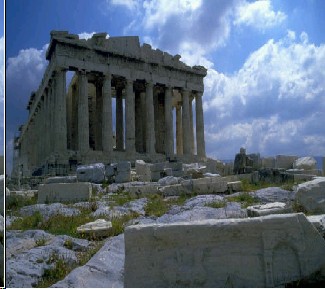
 |
 |
 |
 |
 |
 |
 |


Once upon a Saponification...........


Legend has it that soap was first discovered on Mt. Sapo on the outskirts of ancient Athens. Women washing clothes noticed that after a rain the clothing was much more easily washed clean.At first this was attributed to the Gods, but a closer look at what happened explains this phenomenon much better. Rain water drained through the ash heaps left from sacrifical altars, leached alkali out of the ashes and mixed the solution with the leftover fats from the altars. This formed a primitive soap which continued to leach into the streams surrounding the temple complex. This was the reason that the women found it easier to clean clothes near the temples. Well, time passed on, and we learned how to make soap by deliberately pouring water over hardwood ashes to make a strong alkali solution. This potash soap was soft, but serviceable. In the Castille region of France and Spain, Olive oil was used with the alkali to make the first hard bars of soap. This soap was treasured by the rich and royalty of the period, and was given as gifts along with books, salt and gold. My, how times change, well, we still value gold!!

In the late 1700's the French developed a reliable method of making soap inexpensively, using dried potash -- pearlite -- from the american colonies. Yes, American pearlite was one of the trade goods that endeared us to the French and helped influence them to help us in our War of Independance. Colonists burned large quantities of hardwood and stored the ashes in special sheds. When the sheds were full, water was poured over the ashes, leaching out the potash. This strong potash solution was boiled in large flat iron pans, and the resulting salts were called Pearlite. Pearlite was one of the few tax exempt goods that the Brittish Crown allowed Americans to export. Could be that the tax collectors didn't want to fool around with Lye!!
 Today, we have much more reliable and refined methods of making soap than were available to the colonists and Grandma. Many people still have the misunderstanding that Lye soap is harsh and dangerous.
Today, we have much more reliable and refined methods of making soap than were available to the colonists and Grandma. Many people still have the misunderstanding that Lye soap is harsh and dangerous.
 With the advent of modern methods, computers, saponification programs and digital scales, we can make soaps to exacting specifications. We deliberately SUPERFAT our soaps from 3% to 8% so that the soaps are gentle and nourishing to the skin. You will find that these handcrafted soaps, with superfatted oils and natural glycerin left in them, are pleasant to use.
Commercial "soaps" in most cases are not soap at all. They are a combination of surfactants, foaming agents and detergents. Many of them add up to 25% lotions and mineral oils to try to replace the naturally occuring glycerin and fats
in soap. This is not soap at all. These products are called "beauty bars", "Bath Bars" or "Deodorant Bars". According to the FDA, only naturally saponified animal and vegetable oils and fats can be called soap. Look at the "Soap" in your bathroom. You may be amazed to find out that most of it isn't soap at all!
Our soaps at Carrie's Crafts are made from pure oils, distilled water and 100% Sodium Hydroxide, and for our liquid soaps, Potassium Hydroxide. We scent our soaps with the finest Essential Oils and Fragrance Oils. We use additives like beeswax, oatmeal, rice flour and flower petals from Rose, Calendula and the buds of Lavender. Sometimes we add herbs like Lemon Balm, which impart natural fragrances of their own.
All of our ingredients are chosen carefully and deliberatly to present you with the finest soap you can use for your family and your precious skin. I hope you enjoy our art and work.
Dave Brewton
With the advent of modern methods, computers, saponification programs and digital scales, we can make soaps to exacting specifications. We deliberately SUPERFAT our soaps from 3% to 8% so that the soaps are gentle and nourishing to the skin. You will find that these handcrafted soaps, with superfatted oils and natural glycerin left in them, are pleasant to use.
Commercial "soaps" in most cases are not soap at all. They are a combination of surfactants, foaming agents and detergents. Many of them add up to 25% lotions and mineral oils to try to replace the naturally occuring glycerin and fats
in soap. This is not soap at all. These products are called "beauty bars", "Bath Bars" or "Deodorant Bars". According to the FDA, only naturally saponified animal and vegetable oils and fats can be called soap. Look at the "Soap" in your bathroom. You may be amazed to find out that most of it isn't soap at all!
Our soaps at Carrie's Crafts are made from pure oils, distilled water and 100% Sodium Hydroxide, and for our liquid soaps, Potassium Hydroxide. We scent our soaps with the finest Essential Oils and Fragrance Oils. We use additives like beeswax, oatmeal, rice flour and flower petals from Rose, Calendula and the buds of Lavender. Sometimes we add herbs like Lemon Balm, which impart natural fragrances of their own.
All of our ingredients are chosen carefully and deliberatly to present you with the finest soap you can use for your family and your precious skin. I hope you enjoy our art and work.
Dave BrewtonOperations Manager,
Carrie's Crafts



 © 2002 by Carrie's Crafts - all rights reserved
© 2002 by Carrie's Crafts - all rights reserved